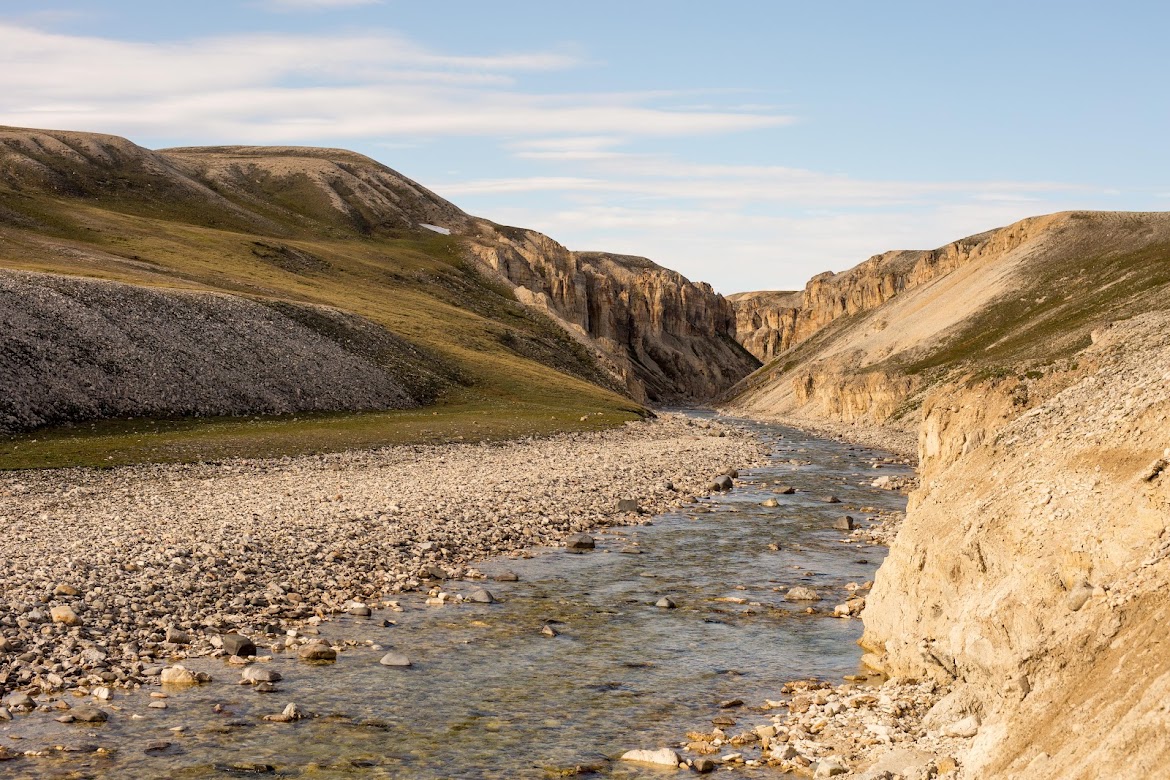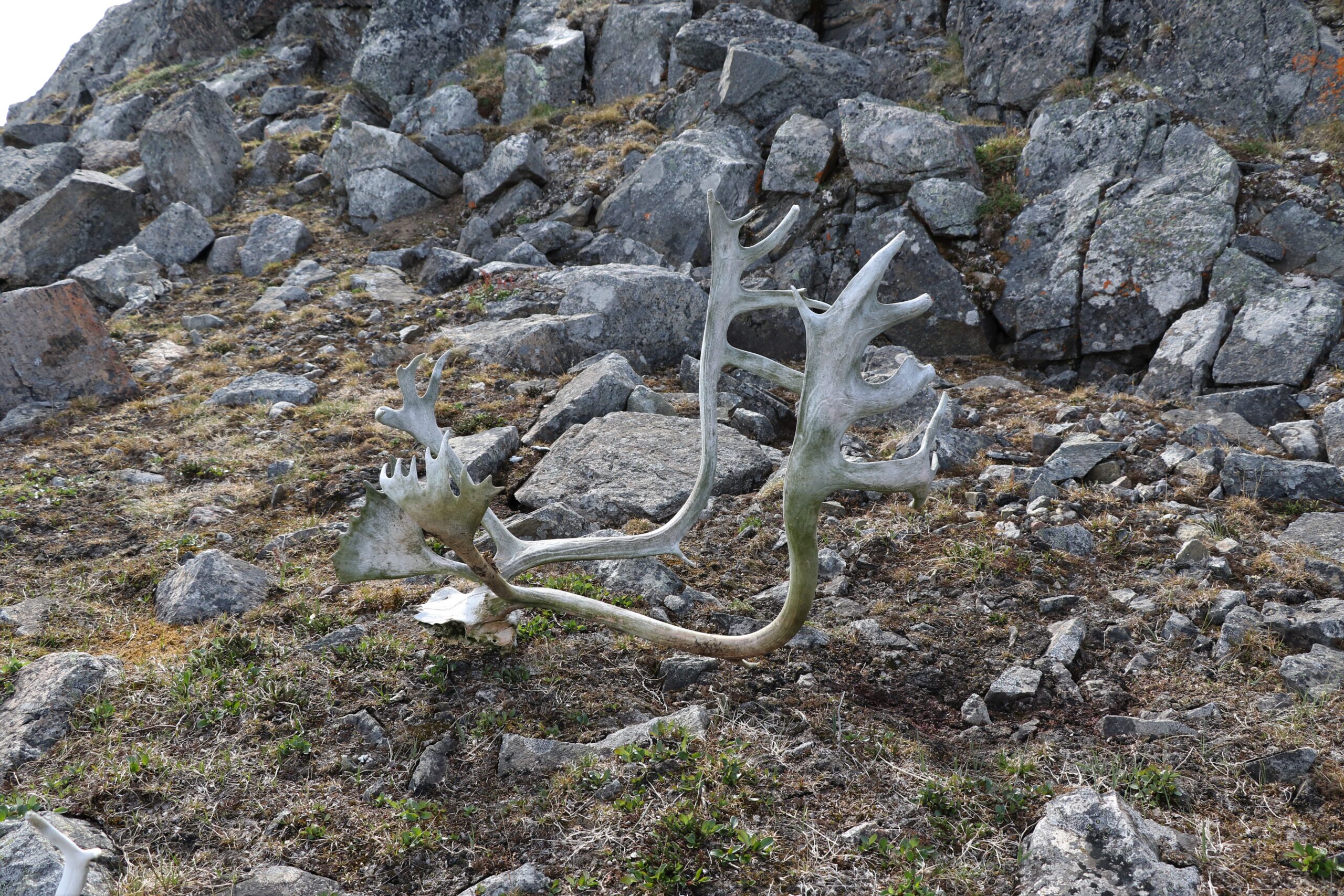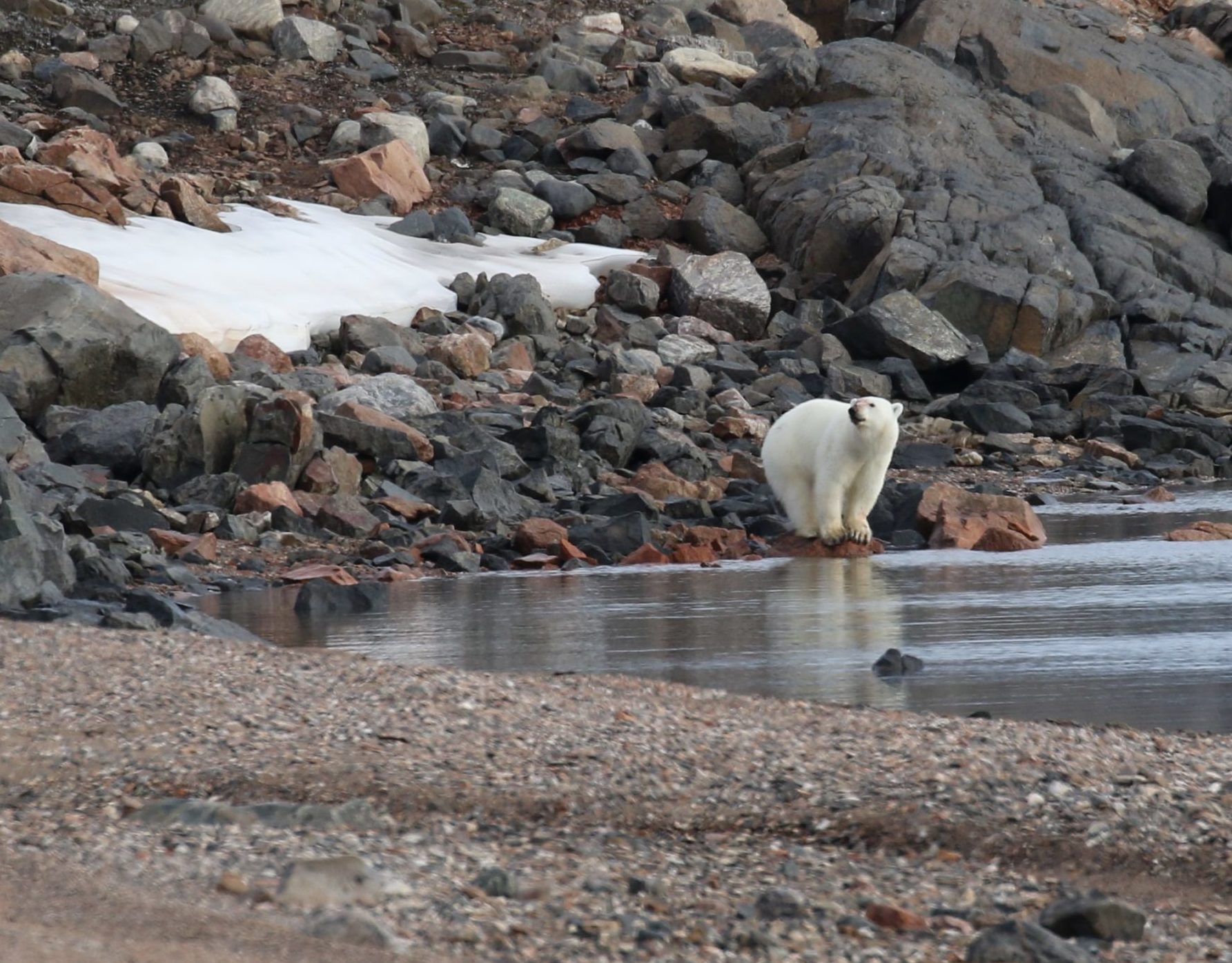‘Bear in Camp’: Field notes from a research expedition to Creswell Bay, Nunavut (Part II)
The old tent rings, sun-bleached animal bones and worn footpaths found throughout the area make it clear that Creswell Bay, on the eastern side of Somerset Island, has been known and used by Inuit for a long time.
Devon Manik, a friend and hunter from Resolute, the second-northernmost community in Nunavut, explained the history of the place to me. Manik’s grandfather and family, who had travelled to Creswell from Pond Inlet on the northeast tip of Baffin Island, would do exploratory trips around Somerset Island.
Read Part I here.

They would never stay in one area for very long, moving to a new location every two years. Around five other families would also move there later, some from the Arctic Bay area, spending a few winters.
Manik’s grandfather was moved away at 5, as he had tuberculosis, and then sent to a residential school. Upon returning, he had to relearn everything — he would often travel around Somerset Island with his brothers, sometimes alone, by dogsled. They would trade fox skins and bear hides with the Hudson Bay Company’s Fort Ross trading post on Somerset, which was established in 1937, and later Taloyoak after Fort Ross was abandoned in 1948.
Act Now to Protect the Arctic’s Future:
Renew your support this year to protect Arctic species and their habitat
The most recent draft of the Nunavut Land Use Plan highlights an important caribou calving ground just north of where we camped. Due to the nature of our work, we didn’t explore the area, aside from staring into what looks like a natural corridor running northwest of the bay.

It’s still uncertain what caribou species use Somerset. The large antlers we found seemed much too large for a Peary caribou, known to inhabit areas in higher latitudes, so it could be the Aniak herd , or even Dolphin-Union, as little is known of their range.
I was leaving tomorrow with Maha; she was heading to Pond Inlet for some orca work and I was en route to Whale Cove to meet with polar bear patrollers. (Read more here.)
The remainder of the team would stay in camp for an additional two weeks and be joined by Luke Storrie, another experienced whale researcher. A large group of narwhal came into the waterway and we spent the evening observing and documenting the tusked ice whales.
I took the overnight shift of polar bear patrol, but spent most of the time looking for whales, drinking coffee and trying to take the scene in before my departure. Paul relieved me of my shift around 5 a.m. and I went to bed.
About two hours later, I heard someone yell “bear in camp!” and I rushed out of my tent.
The group convened and watched. The bear was about 30 metres to our north, standing on the shore with its face full of blood, one paw holding down its prey while the muscles of its neck tensed and pulled at the meat, only taking small breaks to raise its head in our direction.
It was difficult to make out what it was feeding on, but our first thought was a harp or bearded seal. Quickly, these thoughts moved to the question of what a polar bear does after it is no longer occupied by its meal?

The bear raised its head, sniffed in the air, and with that we ensured the bear heard us, seen we were humans and tried to scare it away. Thankfully, the bear took the hint, slowly walked into the water and started to swim away.
We ventured over to the site where it fed and examined the remains. There was none. Just the smell of seal which I immediately recognized from my time working with sled dogs, which is often on the menu for the Arctic canines.
As we watched the polar bear swim away, I was relieved but also wondered what’s next for this bear? This area of Somerset is the convergence of three of Canada’s 13 polar bear sub-populations. The southern extent of the Lancaster Sound population, and the northern extents of both the M’Clintock Channel and Gulf of Boothia populations.
The Kenn Borek twin otter plane showed up a couple hours later. Half asleep, jittery from the polar bear and camp coffee, I looked out my window as we approached the mouth of Creswell River. An area just out of reach of our zodiacs but thought to be a likely place for whales to congregate as the river serves as a vessel emptying the massive watershed into sediment rich shallows.
I spot my first white whale!
Then a second, and a third. It’s a group with their young. These are beluga calving grounds.
Our collective understanding of the impact of underwater noise pollution on the migratory movements and behaviors of Arctic marine mammals is still limited. But as climate change decreases sea ice while increasing the threat of industrial stressors — underwater noise from vessels in parts of the Arctic Ocean more than doubled between 2013 and 2019, and in some places, like Baffin Bay, it rose tenfold — it is crucial that we bridge these knowledge gaps to advocate for the most effective Arctic conservation policies and legislation.
WWF-Canada’s Arctic Species Conservation Fund, which supports high-quality stewardship and research initiatives, encourages collaboration between academic scientists and the Indigenous people who call the Arctic home.
ASCF has engaged in projects like this Creswell Bay research for the past seven years with great success — and donations from supporters like you make this possible.

